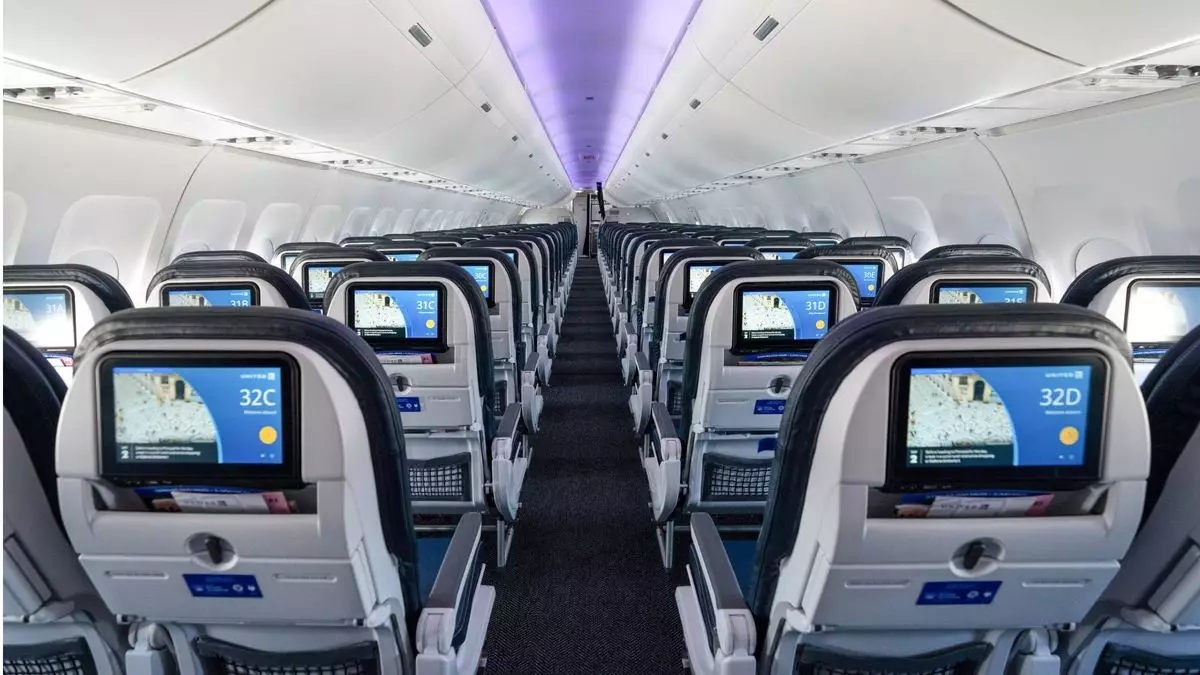In recent times, the airline industry has witnessed a significant evolution in fare structures, particularly with United Airlines’ basic economy product gaining considerable traction. The latest insights from United’s Q3 earnings call reveal that basic economy ticket sales surged by 20% year-over-year, following an impressive 50% increase the previous year. This strategic focus on budget-conscious travelers not only reflects changing consumer preferences but also illustrates a broader trend that may redefine the airline’s operational strategies. United’s Chief Commercial Officer, Andrew Nocella, described the basic economy initiative as a “home run” for the airline, attributing its success to a substantial transformation within the company.
Changing Passenger Profile and Revenue Metrics
According to Nocella, basic economy now constitutes approximately 16% of United’s domestic passenger base, a notable increase from 12% the previous year. This demographic shift underscores a burgeoning market segment that airlines are increasingly catering to: travelers seeking the lowest possible fares with minimal frills. While this growth is promising, it comes with limitations for passengers, including restrictions on seat selection and the inability to stow carry-on luggage in overhead bins. Instead, basic economy flyers are only permitted personal items, which raises questions about the overall travel experience for these customers.
Furthermore, the lack of flexibility in changing flights, coupled with partial flight credits for cancellations, appeals to a specific segment of the market—the price-sensitive traveler. While this approach can attract new clientele, it also risks alienating those who prioritize comfort and adaptability in their travel experiences.
Future Prospects and Capacity Enhancements
United Airlines appears poised to continue expanding its basic economy offerings, with a strong emphasis on capitalizing on profitability as the primary driver. The introduction of larger aircraft is integral to this strategy. By 2027, the airline anticipates an average of 145 seats per North American flight, a marked increase from 104 seats in 2019. Such enhancements could facilitate greater availability for basic economy tickets, positioning United favorably against competitors.
As the airline enhances its volume of low-fare ticket sales, it must also balance its portfolio by upgrading its premium services. By diversifying cabin classes, United can cater to a broader range of passengers—from budget-conscious travelers to those seeking luxury experiences, thus enhancing its competitive standing against the likes of Delta and Alaska Airlines.
Despite the growing success of basic economy, United Airlines faces hurdles that accompany the fierce competition and industry fluctuations. The airline reported a pre-tax margin of 9.7% for Q3, slightly exceeding Delta’s margin of 8.9%. While revenue figures were robust, with a reported income of $14.84 billion, the airline also encountered a marginal decline in revenue per passenger mile flown, attributed to industry overcapacity earlier in the quarter.
However, a revitalization in airfares was noted as early as mid-August, suggesting a recovery in pricing strategies after experiencing a downturn. Notably, despite a decrease of 15.1% in net income year-over-year, United made headlines with the announcement of share repurchases totaling $1.5 billion. This move sent the airline’s stock prices soaring, reflecting strong investor confidence amid turbulent times.
While the airline celebrates financial victories, tensions are brewing within its workforce. The announcement of stock buybacks has drawn criticism from the Association of Flight Attendants-CWA, with concerns regarding labor negotiations and employee representation. This dichotomy presents a significant challenge for United as it seeks to balance shareholder expectations with employee welfare. The airline must navigate these complexities with care to maintain labor relations and avoid potential disruptions.
United Airlines’ strategic pivot towards basic economy travel highlights a critical shift in its operational focus, catering to a growing segment of budget-conscious passengers. While the success of this initiative has bolstered the airline’s financial performance, it comes with its own set of challenges, including workforce dissatisfaction and the need for continuous innovation in service offerings. As the airline navigates this evolving landscape, it must remain vigilant in addressing both its market opportunities and internal labor dynamics to achieve sustainable growth in a competitive industry environment.

